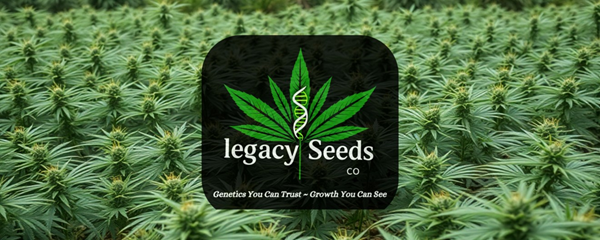As of April 2025, 21 U.S. states have operational adult-use cannabis markets, with Delaware and Minnesota having markets that are launching later this year or early 2026. Each state has a unique framework for taxing and allocating marijuana revenue.

Below is a comprehensive overview detailing how each state utilizes recreational marijuana tax revenue, based on state law.
Alaska
-
Tax Structure: Weight-based excise tax: $50/oz (flowers), $25/oz (immature buds), $15/oz (trim), $1/clone.
-
Revenue Allocation:
-
25% to the general fund.
-
50% to the Departments of Public Safety, Health and Social Services, and Corrections.
-
25% to the Marijuana Education Fund.
-
Arizona
-
Tax Structure: 16% excise tax plus 5.6% transaction privilege tax.
-
Revenue Allocation:
-
33% to community colleges.
-
31.4% to police and fire departments.
-
25.4% to the highway fund.
-
10% to the justice fund.
-
0.2% to the state attorney general for enforcement.
-
California
-
Tax Structure: 15% excise tax on retail gross receipts.
-
Revenue Allocation:
-
Youth Programs: 60% of the cannabis tax revenue is allocated to youth education, prevention, and early intervention programs.
-
Environmental Restoration: 20% is directed towards environmental cleanup and restoration efforts, particularly addressing damage from illegal cannabis cultivation.
-
Public Safety: 20% supports public safety initiatives, including funding for law enforcement and fire protection services.
-
Colorado
-
Tax Structure: 15% excise tax on wholesale sales and 15% sales tax on retail sales.
-
Revenue Allocation:
-
Excise tax revenue supports public school construction.
-
Sales tax revenue funds the Marijuana Tax Cash Fund, which supports health care, education, and substance abuse prevention.
-
Connecticut
-
Tax Structure: Excise tax based on THC content: $0.00625/mg for flower, $0.0275/mg for edibles, $0.009/mg for other products; plus 6.35% sales tax.
-
Revenue Allocation:
-
15% to the general fund.
-
60% of the remaining revenue to social equity programs.
-
5% of the remaining revenue to substance misuse treatment programs.
-
Delaware
-
Tax Structure: 15% excise tax.
-
Revenue Allocation:
-
7% to the Justice Reinvestment Fund for community improvement projects.
-
Remaining funds are allocated by the legislature after covering administrative costs.
-
Illinois
-
Tax Structure: Excise tax varies: 10% for products with ≤35% THC, 25% for products with >35% THC, and 20% for infused products; plus 7% tax on wholesale sales.
-
Revenue Allocation:
-
35% to the general fund.
-
25% to the Restore, Reinvest, and Renew (R3) Program.
-
20% to mental health and substance abuse services.
-
10% to pay state bills.
-
8% to local governments.
-
2% to public education.
-
Maine
-
Tax Structure: 10% excise tax; additional excise tax based on product weight.
-
Revenue Allocation:
-
12% to the Adult Use Marijuana Public Health and Safety Fund.
-
88% to the general fund.
-
Maryland
-
Tax Structure: 9% sales tax.
-
Revenue Allocation:
-
35% to the Community Reinvestment and Repair Fund.
-
5% to counties where cannabis sales are allowed.
-
5% to the Cannabis Public Health Fund.
-
5% to the Cannabis Business Assistance Fund.
-
Remaining funds to the state general fund.
-
Massachusetts
-
Tax Structure: 10.75% excise tax; 6.25% sales tax; up to 3% local option tax.
-
Revenue Allocation:
-
Sales tax revenue supports the general fund, the Massachusetts Bay Transportation Authority, and the School Building Authority.
-
Excise tax revenue funds the Cannabis Control Commission and public health programs.
-
Michigan
-
Tax Structure: 10% excise tax; 6% sales tax.
-
Revenue Allocation:
-
15% to municipalities with retail stores.
-
15% to counties with retail stores.
-
35% to the School Aid Fund.
-
35% to the Michigan Transportation Fund.
-
Minnesota
-
Tax Structure: 10% excise tax; 6.875% sales tax.
-
Revenue Allocation:
-
80% to the state government.
-
20% to local governments.
-
Funds are directed towards education, prevention, outreach, and research.
-
Missouri
-
Tax Structure: 6% excise tax; 4.225% state sales tax; local taxes up to 3%.
-
Revenue Allocation:
-
After covering operational costs and expungement expenses, remaining revenues are split equally among:
-
Veterans services.
-
Drug addiction treatment and overdose prevention.
-
Public defender system.
-
-
Montana
-
Tax Structure: 20% excise tax.
-
Revenue Allocation:
-
$6 million annually to the HEART program for substance abuse recovery.
-
20% of remaining revenue to Fish, Wildlife, and Parks.
-
3% or $200,000 (whichever is less) to veterans and surviving spouses.
-
New Jersey
-
Tax Structure: $2.50 per ounce excise tax on cultivators; 6.625% sales tax; local taxes up to 2%.
-
Revenue Allocation:
-
70% to communities disproportionately affected by prior cannabis enforcement.
-
Funds support economic development, education, and public health initiatives.
-
Nevada
-
Tax Structure: 15% wholesale tax; 10% retail excise tax.
-
Revenue Allocation:
-
Funds are directed to the state’s general fund, supporting education and public health programs.
-
New Mexico
-
Tax Structure: 12% retail excise tax, increasing by 1% annually until reaching 18% by July 1, 2030; 5.125%–8.6875% gross receipts tax, varying by location.
-
Revenue Allocation:
-
Two-thirds of the cannabis excise tax revenue is deposited into the state’s general fund.
-
One-third is distributed to local governments (municipalities and counties) where the sales occur, based on the location of the retail activity.
-
New York
-
Tax Structure: 9% state sales tax; 4% local sales tax; THC-based potency tax: $0.005/mg (flower), $0.008/mg (concentrates), $0.03/mg (edibles).
-
Revenue Allocation:
-
40% to community reinvestment grants.
-
20% to public schools.
-
40% to drug treatment and public health programs.
-
Ohio
-
Tax Structure: 10% excise tax; 5.75% state sales tax; local taxes up to 2.25%.
-
Revenue Allocation:
-
36% to the Cannabis Social Equity and Jobs Fund, supporting social equity programs and job initiatives.
-
36% to the Host Community Cannabis Fund, benefiting municipalities and townships that host adult-use dispensaries.
-
25% to the Substance Abuse and Addiction Fund, funding education and treatment services.
-
3% to the Division of Cannabis Control and Tax Commissioner Fund, covering regulatory and administrative costs.
-
Oregon
-
Tax Structure: 17% excise tax; local taxes up to 3%.
-
Revenue Allocation:
-
40% to the State School Fund.
-
20% to mental health, alcoholism, and drug services.
-
15% to state police.
-
10% to cities.
-
10% to counties.
-
5% to the Oregon Health Authority for drug abuse prevention.
-
Rhode Island
-
Tax Structure: 10% excise tax; 7% sales tax; 3% local tax.
-
Revenue Allocation:
-
Funds support program administration, substance use disorder prevention, public education campaigns, treatment services, public health monitoring, and law enforcement training.
-
Vermont
-
Tax Structure: 14% excise tax; 6% sales tax.
-
Revenue Allocation:
-
The 6% sales tax revenue is dedicated to a grant program aimed at starting or expanding afterschool and summer learning programs, emphasizing underserved communities.
-
Additionally, up to 30% of the cannabis excise tax revenue (capped at $10 million annually) is allocated to substance misuse prevention programming.
-
Washington
-
Tax Structure: 37% excise tax; 6.5% state sales tax.
-
Revenue Allocation:
-
Health Care: Around 54% to 61% of cannabis tax revenue is allocated to health care programs, primarily funding the state’s Basic Health Plan Trust Account, which provides health care for low-income individuals and those without insurance coverage.
-
General Fund: Around 30% of the revenue goes into the state’s general fund, supporting various state programs, including K-12 education.
-
Prevention, Education, and Treatment: Approximately 9% is directed toward substance abuse prevention, public health programs, and education initiatives.
-
Local Governments: About 3% is distributed to local governments that permit cannabis businesses, helping to offset enforcement and administrative costs.
-
Administration and Enforcement: Roughly 3% funds the administration and enforcement of cannabis regulations.
-
Research and Social Equity
-
Marijuana Tax Revenue Chart
| State | Tax Rate | Revenue Use Summary |
|---|---|---|
| Alaska | $50/oz flower; others by product | General fund, health and safety, education |
| Arizona | 16% excise + 5.6% sales | Colleges, police/fire, roads, justice programs |
| California | 15% excise | Youth services, environmental restoration, public safety |
| Colorado | 15% wholesale + 15% retail | School construction, health, drug prevention |
| Connecticut | THC-based + 6.35% sales | Social equity, substance treatment, general fund |
| Delaware | 15% excise | Justice Reinvestment Fund, legislative allocation |
| Illinois | 10–25% excise + 7% wholesale | General fund, equity grants, health, education, locals |
| Maine | 10% excise + cultivation tax | Public health and safety, general fund |
| Maryland | 9% sales | Community reinvestment, counties, health, business support |
| Massachusetts | 10.75% excise + 6.25% sales + 3% local | Education, transit, Cannabis Control Commission, health |
| Michigan | 10% excise + 6% sales | Schools, roads, cities and counties with retail stores |
| Minnesota | 10% excise + 6.875% sales | Education, prevention, local and state government |
| Missouri | 6% excise + 4.225% sales + up to 3% local | Veterans, addiction treatment, public defenders |
| Montana | 20% excise | HEART program, wildlife, veterans |
| Nevada | 15% wholesale + 10% retail | General fund, education, health programs |
| New Jersey | $2.50/oz excise + 6.625% sales + up to 2% local | Disadvantaged communities, education, public health |
| New Mexico | 12–18% excise + 5.125–8.6875% sales | General fund, local governments |
| New York | THC tax + 9% state + 4% local | Community grants, schools, health and treatment |
| Ohio | 10% excise + 5.75% sales + up to 2.25% local | Equity, local host cities, treatment, regulation |
| Oregon | 17% excise + up to 3% local | Schools, mental health, police, cities, counties |
| Rhode Island | 10% excise + 7% sales + 3% local | Admin, prevention, education, law enforcement |
| Vermont | 14% excise + 6% sales | Afterschool grants, substance misuse prevention |
| Washington | 37% excise + 6.5% sales | Health care, schools, prevention, enforcement, locals |





